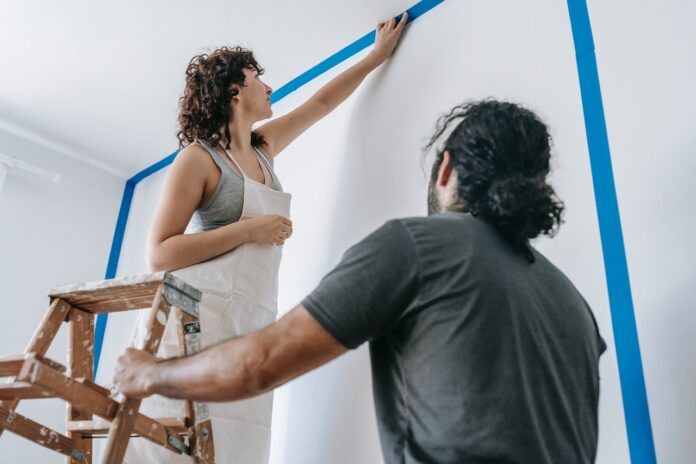Rejoice! For cycling enthusiasts all over the UK, the warmer weather, lighter mornings and brighter evenings mean one thing; more time spent on two wheels!
We just love that sense of freedom which biking brings, shirts in the breeze like we’re sailing and the soft hum of rubber on concrete providing the soundtrack. That said, such an obsession with the thrill of cycling can lead to aches and pains, repetitive strain injuries and sometimes even long-term damage should your bike not be at the right height, your saddle not secured correctly, and your posture not primed and ready for any bumps in the road.
Fortunately, we’re here to help with all that. If you want to be as comfortable as possible while riding your bike, here’s how to prepare for a bike ride to avoid aches and pains when cycling.
CHECK YOUR BARS
Key to a comfortable ride is having the right stack and reach, so it’s essential that you check your bars, in terms of height, width and relationship to the saddle, before you set off on any long rides.
If you’re on the smaller side, then stretching too far to compensate can cause issues with posture, and run the risk of injury to your back and neck. Fortunately, this is easily mitigated; to decrease your reach, you should invest in a shorter stem, or to avoid that expense, simply slide your saddle forward, although this can cause issues with your pedalling action.
As well as the reach, the height of the bars is equally as important. If there is too much space between the saddle and bars, it can cause great discomfort, placing undue pressure on your arms and wrists, and potentially endangering you as you cycle as you will likely be less stable.
Read: 5 reasons to invest in an electric folding bike
CHECK THE SADDLE
While your bike is secured in place, check the tilt of your seat, ensuring that you can pedal backward without feeling like you’re about to slide forward or back. If your saddle isn’t in the centre, you will end up having to push or pull more on the handlebars, leading to undue stress on the upper body and also significant discomfort to sensitive areas – you want to avoid that at all costs!.
If this particular discomfort is occurring, try to lower the nose of the saddle by a few degrees – this can help relieve pressure on any sensitive areas.
The correct saddle is also important in ensuring you enjoy the most comfortable ride. If the saddle on your bike is not anatomically suited to your needs, it can cause numbness and the dreaded saddle sore. For overweight cyclists, in particular, opt for a saddle with extra padding and support.
Saddle height is also important. Always ensure that your legs are almost straight when touching the pedals. If the saddle is too high, you risk injury, particularly to the knees. If too low, you may find your pedalling impacted negatively.
The best way for beginners to find their optimum saddle height is through the heel-to-pedal method. According to the guys at Road Cycling UK, after securing your bike, either by leaning it against a wall or having someone hold it upright, ‘’Place your heel on the pedal and pedal backwards to reach the six o’clock position. Your knee should be completely straight.’’
Should your knee still be bent, you should increase the height, little-by-little, until your leg is straight when the pedals are at six o’clock.
Read: 5 IDEAL tips for picking the perfect bike
STRETCH
Stretching before you set off and warming down when you finish a bike ride is also crucial in preventing aches, pains and injuries from occurring. Whilst cycling, you can end up overextending yourself and stiffening your neck and back muscles.
Generally speaking, the longer the ride, the more your body will hurt afterwards. So, prior to and following your ride, incorporate a little stretching into your routine to prevent soreness. Stretch your neck, and upper and lower back. A little soreness in new riders is only natural, but you don’t want to put yourself off by being in loads of pain for days afterwards! And rest assured; the more you ride, the more your body will adapt.
THE RIGHT GEAR
Riding on long, challenging stretches will most likely cause soreness in the buttocks and groin, make no mistake. Wearing shorts with a padded chamois also known as a “shammy” can help prevent this pain.
Whilst lycra is sometimes mocked by those who don’t cycle, it helps reduce chafing and rubbing massively when you’re cycling as it stays in place. It’s also moisture-wicking, but be warned; lycra doesn’t tend to be breathable. That said, any loosely worn cycling clothes which are breathable may get caught in the gears and will certainly chafe. Better to get a little sweaty, don’t you think?
STAND MORE
To improve the comfort of your ride, spend less time on the saddle sitting and stand more when you’re in motions, particularly when going down hills, to ward off stiffness and keep your body stretched and supple.
NEGOTIATING ROUGH SURFACES
For longer rides, especially over rough surfaces, you want to take all necessary precautions to prevent pain in your wrists and hands. The best and simplest way to do this is to wrap your handlebars with two layers of bar tape. This provides extra padding to cushion potholes causing vibrations to shudder through your bike, with your body having to soak up the impact. If you require extra padding, place gel inserts under the bar tape.
Reducing the pressure in your tires has a similar effect as taping up your bars. Lower tire pressures add protection when it comes to longer rides. If your tires are wide, lower pressure will allow a greater volume of air, therefore providing a better ride quality. Be careful though, if you go too low, it could put you at risk of a flat. And there’s certainly nothing comfortable about that.
THE RIGHT BIKE
If you’re a new rider or you’re in the market for some new wheels, opt for a bike that will fit your needs best. If you’re a commuter or mainly plan to use it for trips to see friends and run some errands, opt for a cruiser or a bike with a wider, lower seat. This is ideal so that your feet can reach the ground when you’re stopping in traffic. If you plan to ride longer distances or faster speeds, you want a bike in a more aerodynamic position so you can lean forward comfortably. If you’re using the bike for a bit of both, opt for a hybrid style.





